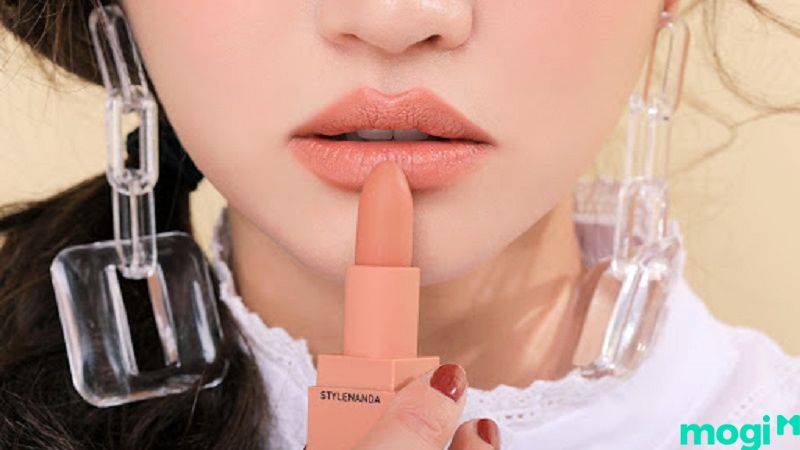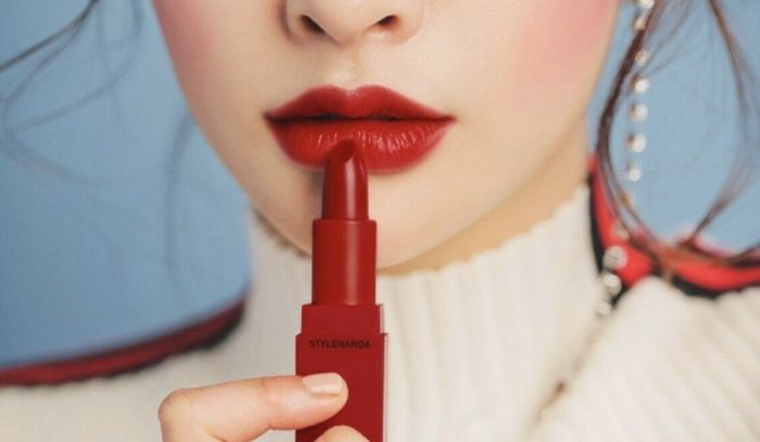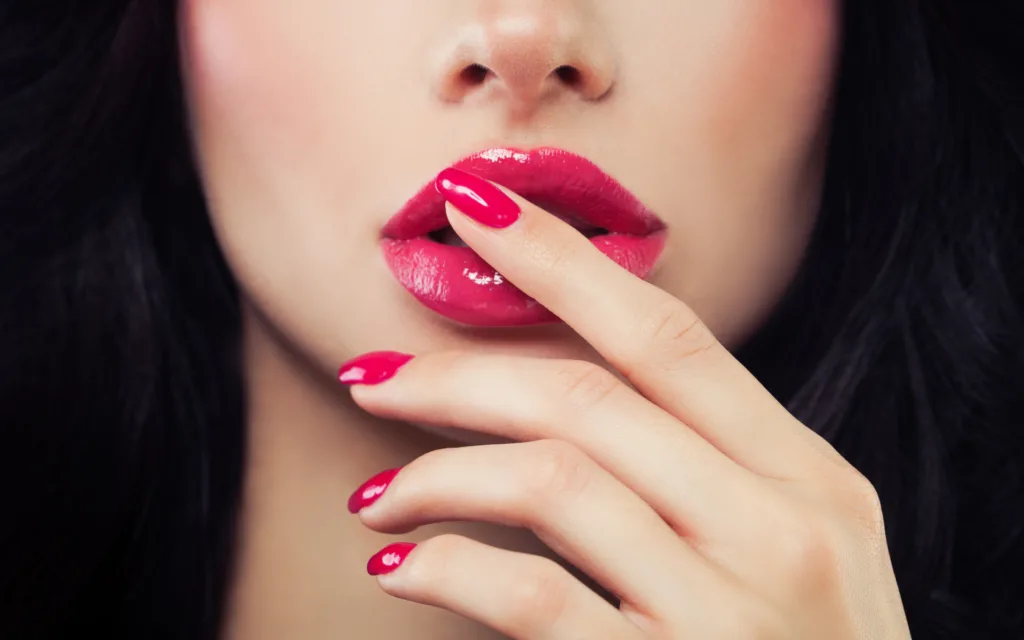News
The Complete Lip Routine: Smoother, Brighter, Better-Defined Lips in 7 Days
Part I — Diagnose, Don’t Guess
Before you buy another balm or blame your lipstick, pause. Most lip frustrations—flaking, dullness, uneven color, fuzzy borders, products “not sticking”—aren’t personality flaws of your mouth or failures of makeup. They’re signals. Lips are unusual skin, shaped by habit, weather, light, and the formulas you layer. When you can read those signals, your routine becomes short, effective, and oddly satisfying. This first part is your field guide: what “dry,” “dark,” and “blurred lip line” really mean; why lips behave differently than the rest of your face; which ingredients actually do what they claim; and how to run a few at-home tests that map your mouth so the next seven days of care land perfectly.
1) Understand the terrain: why lips are not facial skin
Lips are thin, gland-light, and extroverted. The outer skin (vermilion) has fewer layers of keratin and almost no oil glands. That makes lips expressive and soft—but also vulnerable to water loss, wind, UV, heat, spice, and friction. Color shows through more readily, so inflammation and circulation changes are visible. Where your cheek might absorb a new active with a shrug, lips can sting, flake, or overcompensate with constant licking. Translation: what “works” on your face can be too much for your mouth, and the rhythm of application matters as much as the product.
Key differences that drive routine design:
Low sebum, high TEWL: Without natural oils, moisture escapes quickly (transepidermal water loss). Solutions must trap water, not just add it.
Fast turnover, fragile barrier: Lips renew quickly but lack a robust stratum corneum; “exfoliating” can tip into micro-tears if you’re not gentle.
UV-responsive pigment: Melanocytes in the vermilion and surrounding skin respond to sunlight and heat. Unprotected exposure can deepen natural pigmentation or cause a persistent outline.
2) Define the problem precisely: dry, dark, blurred—the big three
Dry isn’t one thing. It can be:
Dehydrated: water deficit. Lips look thin, papery, fine lines sharpen. Humectants (glycerin, hyaluronic) help—but only if you trap them with an occlusive layer.
Lipid-depleted: oil/ceramide deficit. Lips feel tight even after drinking water; balm instantly helps but fades fast. You need richer occlusives (lanolin alternatives, plant waxes, shea) and barrier-like emollients (jojoba, meadowfoam).
Irritated: stinging, redness, tiny flake shards. Often from minty/flavored balms, aggressive scrubs, spicy food, or new actives on nearby skin migrating to the mouth. First step isn’t more product; it’s removing the irritant.
Dark can mean:
Post-inflammatory pigmentation (PIP): after chapping, eczema, an allergic lip balm, or habitual picking. Appears as uneven patches, especially around the edges.
Photo-darkening: cumulative sun exposure; a tan line for the mouth. Often paired with a sharply darker perimeter.
Intrinsic tint: your natural lip is simply deeper or browner. This is not a “problem,” but it affects how nudes and corals show up. The “fix” is opacity control and undertone matching more than lighteners.
Blurred lip line shows up as:
Feathering: color creeps into tiny lines outside the vermilion border, common with emollient glosses and creams, more visible in warm rooms.
Diffuse redness ring: a halo that makes edges look messy even before color.
Texture collapse at corners: the mouth’s hinge zones collect moisture and movement; product slides off, giving a smudged look.
Naming the type of dry, dark, or blurred issue is half the cure. The other half is timing and texture.

3) The habits that quietly sabotage lips
Lip-licking loop: saliva briefly hydrates and then evaporates, pulling water with it. Over time, the top layer becomes fragile, inviting more licking. Replace the reflex: keep a tiny, low-flavor balm; when you catch yourself licking, tap once instead.
Harsh scrubs and toothbrush “polish”: satisfying in the moment; microscopic chaos by afternoon. Prefer warm-cloth softening over grit.
Late balm: applying a thick occlusive right before lipstick floods the edge, melts color, and guarantees a mid-morning slide. Hydrate early; blot before makeup.
Sun amnesia: UV reaches you in cars, on cloudy walks, at winter tables by windows. If you treat skin darkening seriously but never use lip SPF, you’re telling your mouth to keep souvenirs.
Transfer tests on hands: your hand is warmer, oilier, rougher; it lies. Always test on lip or at least on inner arm for comfort; decide performance by how a product behaves under speech, sip, and an hour of normal life.
4) Ingredient literacy—what does what (and what to avoid)
Humectants (draw moisture in):
Glycerin: small, reliable, friendly at low to mid concentrations. Great in overnight masks and prep balms.
Hyaluronic derivatives: cushion feel; work best when sealed. On lips, smaller molecules can tingle if the barrier is raw; pair with an occlusive.
Aloe, panthenol: soothing humectants; good for recovery days.
Occlusives (trap moisture, reduce water loss):
Plant waxes (candelilla, carnauba), hydrogenated vegetable oils: sit lightly, form a breathable seal; stable in tubes.
Shea, cupuaçu, kokum butters: richer seal plus emollience; excellent overnight.
Lanolin alternatives: softening and clingy; check for sensitivity.
Emollients (fill micro-gaps, improve slip):
Jojoba esters, meadowfoam, squalane: mimic skin lipids, soften without drowning the surface.
Silky esters: create glide, help pigment spread evenly; often why a balm feels elegant instead of greasy.
Gentle exfoliants (use sparingly):
Enzyme blends (pumpkin, papaya) in lip-safe masks: lift clingy flakes without grit.
Lactic acid at very low %, in dedicated lip formulas: occasional use only, never on raw lips.
Brighteners & tone eveners (for the surrounding skin more than the vermilion):
Niacinamide (low %), licorice extract, arbutin derivatives: target uneven tone at the border; use on skin around the lip, not as a lip balm.
Vitamin C derivatives: cautious use on nearby skin; can sting on lips themselves.
SPF filters:
Mineral (zinc, titanium) in lip balms: effective but can leave a cast; pair with a mid-value tint or layer lipstick on top.
Chemical filters in lip products: comfortable; ensure you tolerate the blend.
What to treat carefully or avoid (especially when sensitive):
Flavor oils and menthol/camphor: feel fresh, often irritate. If your balm tingles, it’s probably not “working”—it’s poking.
High-fragrance sticks: lovely in theory; risky on compromised mouths.
Cinnamon, peppermint, citrus in “plumping” balms: micro-inflammation is not care.
5) Map your mouth: simple at-home diagnostics
You don’t need a lab; you need light and a minute.
The mirror-window check (morning):
Stand by a window with indirect daylight. Smile gently to flatten the lip surface. What do you see?
Micro-flaking concentrated at the center: dehydration + friction from speech. You need a humectant-led night mask and morning blot-before-color.
Flakes along the edges: wind/sun exposure or toothpaste irritation. Check your brushing pattern and mouthwash contact; treat edges with a richer occlusive overnight.
Vertical “barcode” lines prominent even at rest: lipid deficit + intrinsic motion. Prioritize emollients that fill micro-gaps and satins that blur.
The beverage test (midday):
Drink from a glass, then check the inner rim of your lip:
Color missing only at the inner 1–2 mm: you’re depositing too much product right where it will dissolve. Apply short of the rim, let capillary transfer carry pigment inward.
Edges messier than the center: too much slip at the border or no barrier. Add a clear wax pencil just outside the line before lipstick.
The cotton-bud perimeter swipe (evening):
Run a dry cotton bud around your lip line.
Pink residue on skin beyond the border: feathering risk is real. You need either a less emollient finish for day or a barrier pencil/halo concealer combo.
No residue, but edges look red: address the redness ring with a thin skin-tone concealer halo to neutralize before color.
The split-lip finish test (anytime):
Apply your chosen shade in satin on the bottom lip and blotted matte on the top (or vice versa). Which half makes your eyes look clearer and your skin smoother before any other makeup? That’s your daily default finish—keep the other for special rooms.
The water rinse: toothpaste reality check
After brushing, rinse the mouth corners thoroughly and pat dry. Toothpaste residue (especially whitening formulas) can irritate the corners and edge, causing chronic redness and flake. If irritation improves within a week of careful rinse, you found the culprit.
6) Zones and their jobs: border, body, inner rim
Treat your lip like a small map with three regions:
Border: where style and structure live. It requires dryness (makeup-dry, not skin-dry) for grip. Tools: concealer halo, translucent powder whisper, clear barrier pencil, near-invisible liner (one tone deeper than your natural lip).
Body (center surface): where comfort and color richness happen. Tools: humectant + occlusive balance at night; emollient-smart daytime balm applied early and blotted; finishes chosen by room.
Inner rim: a high-humidity, high-friction zone. Tools: restraint (apply short of the rim), stain underlayer for longevity, thin films over thick swipes.
When you respect each zone’s job, lipstick stops misbehaving.
7) Build a tiny vocabulary for quick decisions
“Tight” means lipid-depleted; reach for butters and occlusives.
“Papery” means dehydrated; use humectant first, then seal.
“Stingy” means irritation; strip flavors and scents; go back to basics for 48–72 hours.
“Muddy edge” means red ring plus slip; use halo + barrier or sharper finishes.
“Donut fade” means inner rim overdosed; apply short, stain base, blot.
“Chalky” nude means value mismatch; pick one step deeper and prefer satin.
This micro-language lets you correct in seconds rather than overhaul your bag.
8) The role of lighting and climate (because lips live in the world)
Cold/dry climates: evaporative loss is relentless. Night: richer occlusives, daytime: satins and creams; add a noon comfort tap of balm or gloss-oil at the center only.
Hot/humid climates: slip sabotages edges. Favor stains and modern mattes; rely on barrier pencils, keep gloss micro and centered.
High sun exposure: make SPF a habit around the lip, even if you dislike SPF taste on the vermilion. Use a stick or pencil SPF for the border and lay your favorite lipstick on top.
Lighting:
Daylight reveals texture; choose finishes that blur (satin) or commit to cloud-matte with well-prepped lips.
LEDs flatten and cool; structure helps—defined edges, mid-value shades.
Warm tungsten warms pigment and loves sheen; a mid-depth satin looks expensive with almost no effort.
9) Common myths that waste time (and skin)
“Tingling means it’s working.” No. Tingling usually means irritation. Unless a product is explicitly a benign vasodilator used knowingly, stinging is a stop sign.
“Scrub more if you’re flaky.” Most flaking resolves with moisture balance and stopping the behaviors that caused it. If you must exfoliate, think softening first, not sanding.
“Lip SPF is optional if your lipstick is opaque.” UV still reaches exposed areas, especially the border. Include SPF somewhere in the routine (around the lip, under sheer days, or in a dedicated lip SPF).
“Only pricey balms work.” Texture, not price, predicts success: humectant + emollient + occlusive in a comfortable ratio, minimal irritants, timing that respects makeup.
10) Draft your personal hypotheses (so Part II lands)
A routine works best when it answers your pattern, not a generic script. Based on the tests above, sketch a quick, honest hypothesis:
“I lick my lips when stressed, so my center flakes by noon.”
“My edges are red from toothpaste and look messy before color.”
“I love gloss but it feathers under office lighting.”
“My lips aren’t dry; my nudes are just too light for my natural pigment.”
Each sentence becomes a rule for the next week:
Replace the licking reflex with a tiny, plain balm; hold it like a worry stone.
Rinse corners after brushing; use a halo; switch to a gentler toothpaste for seven days.
Keep gloss for center-only over a set stain; use barrier pencil.
Choose nudes one value deeper; prefer satin; neutralize with a lip-tone liner.
11) Set the stage: the minimal kit that solves 90%
You don’t need a drawer of options to create happy lips. For the seven-day program you’ll want:
A plain, low-flavor prep balm (humectant + emollient + thin occlusive).
An overnight treatment (richer occlusive/butter blend).
A clear barrier pencil and a near-invisible lip liner (one tone deeper than your lip).
A dedicated lip SPF (stick or pencil format if taste/smell bother you).
A soft cloth for warm compress/buffing (a flannel or reusable cotton round).
Optional: enzyme lip mask for stubborn flakes (no grit), tinted balm for off days, stain for longevity experiments.
If you already own favorites that fit these roles, perfect. If not, borrow the function first before chasing a brand: plain, gentle, timed right.

12) Timing is a technology: when you apply matters as much as what you apply
Night: water in, water locked. Apply your humectant-leaning treatment first (look for glycerin/panthenol), then a butter-rich occlusive. If your pillowcase tells you you’re overdoing it (grease marks), reduce quantity; a thin film is enough.
Morning (early): an unobtrusive balm goes on while you do skincare. This is not your “lip layer”; it’s a pre-hydration step. Right before color, blot completely.
Day: center comfort taps as needed; avoid sweeping gloss from corner to corner; think “micro-dose.”
Pre-lip ritual (1–2 min): warm cloth press, halo, barrier/liner, thin coat, blot, thin coat; choose finish.
When you honor timing, even average products behave better; when you ignore timing, even great formulas can seem fickle.
13) Special scenarios and how to adapt
Actives near the mouth (retinoids, acids): buffer with plain balm at the corners before your evening skincare; wipe excess actives off the vermilion after application.
Cold sores or compromised skin: avoid exfoliation, fragrance, flavors; consult your medical provider for antivirals if needed; resume routine gently after healing.
Smokers/very spicy diets: expect extra vigilance at the border; prioritize barrier pencils, halo, and SPF; soothing balms at night.
Masks & workouts: prefer stains and thin films; rehydrate post-activity with a humectant balm and seal if air is dry.
14) Calibrate expectations (the honest timeline)
Day 1–2: comfort improves if you stop triggers (licking, flavors, harsh scrubs) and time hydration right.
Day 3–4: flakes reduce; lipstick sits more evenly; edges already look cleaner with halo + barrier.
Day 5–7: tone looks more even around the mouth; nudes behave; you need fewer touch-ups. Persistent hyperpigmentation at the border may need longer (and sun discipline) to soften.
15) Why this matters beyond lips
Good lip care returns attention. You check the mirror less, you second-guess less, and color choices feel freer. Routine becomes a quiet confidence engine: you decide the message (matte, satin, gloss), not the condition of your mouth. And when lips are comfortable, bold shades stop feeling like auditions and start feeling like sentences you enjoy saying.


